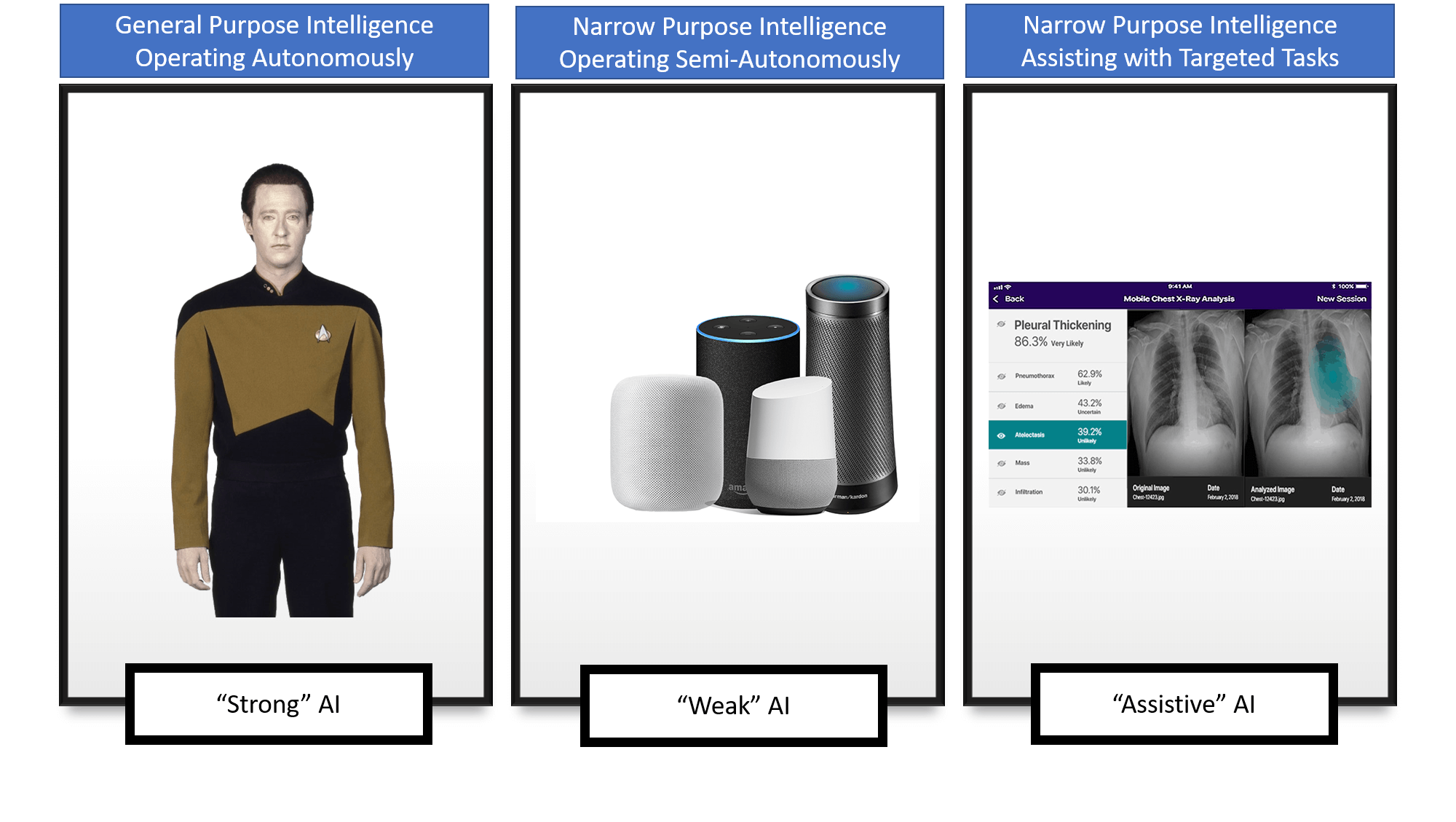AI とアプリケーション サービスの役割
これらはあなたが探しているドロイドではありません。
人工知能とは何かを説明してくださいと誰かに尋ねられたら、何を思い浮かべますか?
おそらく、すぐに頭に浮かぶのは、アーノルド・シュワルツェネッガー(ターミネーター)、ハーレイ・ジョエル・オスメント(A.I.)、ブレント・スパイナー(スタートレック)といった、非常に人間味のある顔でしょう。 「機械学習」という類似の用語から人々が最もよく連想するビジュアルは、通常、顔ではありませんが、2001年のHAL 9000の赤く光るライトや、エクス・マキナの常に冷たいロボットの論理を思い起こさせるかもしれません。 この複雑なテーマが広く理解されるようになったのは、ハリウッドとSFのおかげです。
しかし、こうした空想は、実は人間の脳が機能する仕組みについての科学的思考の正しい表現なのです。 簡単に言えば、人工知能とは「人間の知能の側面を模倣する方法をコンピューターに教えること」と定義できます。

そのインテリジェンスの焦点、特にその目的と運用モードは、3 つの異なるタイプの AI を定義するのに役立ちます。AI とアプリケーション サービスが将来どのように連携するかを理解するには、まず各タイプの AI を調べる必要があります。
強力なAI
映画のスクリーンで見る大きな凶暴なサイボーグや友好的で青白いアンドロイドなどは、自律的な汎用知能の例です。 学習し、学習内容を追加の自律的なアクションに変える以外に、その知能には特別な目的はありません。 これらは人工知能の「強力な」モデルであり、このタイプの AI は厳密には SF の領域に属します。 それらは存在しません。
弱いAI
「強い」AI の次は、人工知能の「弱い」モデルとも言える、よりシンプルで焦点を絞ったバージョンです。映画のアンドロイドのように自律的に動作しますが、目的は限定されています。 動作範囲内で簡単に適応し、学習することができます。 これらのシステムは、設計されている事柄に関しては専門家ですが、独自に新しいことを学習する能力はありません。 私たちは毎日、名前で彼らと交流しています。 Siri、Alexa、Google。 私たちは車の窓を閉めたり、前の車から少し距離を置くように頼みます。 天気について質問すれば、おそらく答えてくれるでしょうが、データ少佐のように人間関係について賢明なアドバイスをくれる可能性は低いでしょう。
補助AI
3 番目で最も一般的なタイプの AI は、必ずしもすぐには目に見えないタイプの AI です。 これは私たちが名前で呼ぶものではありませんが、私たちはこのテクノロジーを含むシステムを日常的に操作しています。 これらのシステムは人工知能の「拡張」モデルです。 これらは、私たちの思考プロセスをより効率的かつ情報に基づいたものにすることで、専門的なタスクを実行する人間の知能を支援するために存在します。 これらはほぼ常に極めて専門的です。たとえば、X 線写真の黒い斑点を分析して技術者に重大な問題である可能性があることを知らせたり、組み立てラインから出てくる製品を素早く比較して、人間の脳が反応するよりずっと前に品質上の問題を発見したりします。
支援AIとアプリケーションサービス
支援型AIはデジタル変革の第3段階の基盤となります。 「AI支援ビジネス」 この AI は、次世代のアプリケーション サービスから収集されたテレメトリを活用し、テクノロジーに根ざしたビジネス上の課題を解決する手段を提供することでビジネスを強化します。 これは、顧客コンバージョン率の低下につながるパフォーマンスの問題を特定するという単純なものから、デジタル化されたビジネス プロセスに苦労している正当な顧客を認識するという高度なものまでさまざまです。 どちらも、データ パス全体にわたる大量のデータ セットが必要です。 どちらのタイプの関係も、AI を活用した高度な分析の力によってのみ迅速に発見できます。
このような将来の機能を実現するために、当社は、コードから顧客データまでのパス全体にわたってアプリケーション サービスを拡張することに重点を置いた独自のデジタル変革の旅に乗り出しました。 このビジョンは、 NGINXの買収、そして最近ではShape Securityの買収につながりました。 両社は、アプリケーション配信の将来と、将来のデジタルビジネスを推進する支援 AI を構築する能力の基盤となる独自のソリューションとアプリケーション サービスを提供します。
